 USA (1896): Protected Cruiser CL-22 New Orleans, CL-23 Albany 1897-1930
USA (1896): Protected Cruiser CL-22 New Orleans, CL-23 Albany 1897-1930WW1 and prewar USN Cruisers
Atlanta class | USS Chicago | USS Newark | USS Charleston | USS Baltimore | USS Olympia | USS Philadelphia | USS San Francisco | Cincinatti class | Montgomery class | Columbia class | New Orleans class | Denver class | Chester class | Omaha classUSS New York | USS Brooklyn | Pennsylvania class | Saint Louis class | Tennessee class
The New Orleans class were two protected cruisers initially built in Britain at Elwick Yard (Armstrong Whitworth) for the Brazilian Navy. The Brazilian Navy had ordered four initially but had already sold the first during construction to Chile and another was delivered to Brazil (Almirante Barroso), the third ship fitting out as Amazonas, the fourth ordered as Almirante Abreu. But on 16 March 1898 the United States Navy purchased the still undelivered ships to prevent acquisition by the Spanish Navy in time of high tensions over Cuba, in order also to augment the US Navy cruiser force, just before the Spanish–American War. New Orleans took part in the war, as well as World War I and the Russian Civil War in Siberia. Albany (ex-Almirante Abreu) missed the war but saw the Philippine–American War and World War I like the Russian Civil War like her sister. They both served as updates on British shipbuilding standards and once they had played their role and others they were discarded in 1930.
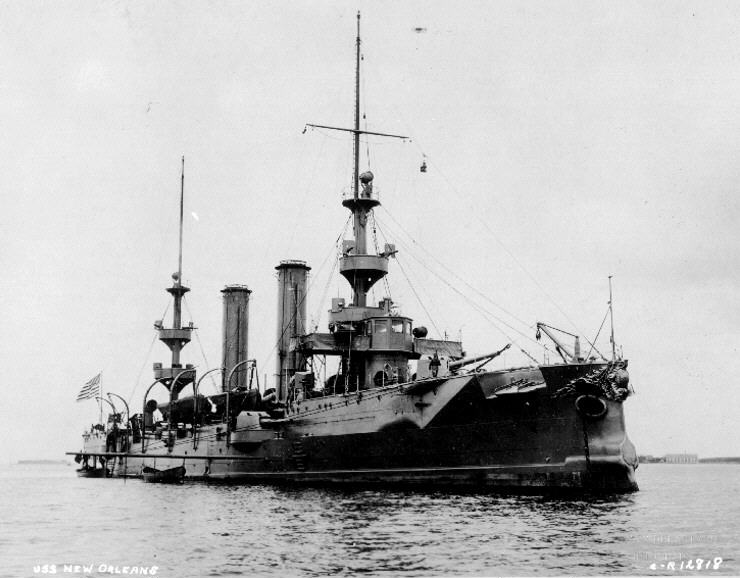
Development
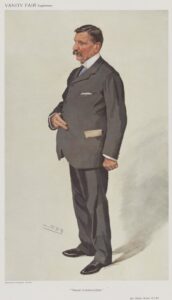 For once this is a subject that would not bring much debate over early US cruiser development as there were typical Armstrong Whitworth export cruisers of the time, symmetrical and with a relatively uniform armament combining however both 6-in and 5-in gun caliber combined with the usual array of light anti-torpedo boat Hotchkiss guns and still three torpedo tubes. As protected cruisers (New denomination CL). Interstingly They initially lacked hull numbers. It’s only on 17 July 1920 with a new nomenclature being setup that they were designated with the hull numbers PG-34 (gunboat) and PG-36. But on 8 August 1921 they were redesignated as light cruisers, CL-22 and CL-23. They were designed by Sir Philip Watts, which succeeded to legendary designer Sir William Henry White (which left in 1885). Sir Philip Watts KCB FRS (30 May 1846 – 15 March 1926) as a British naval architect signed instantly recoignisable Elswick cruisers for most navies but France and Germany, as well as the revolutionary battleship HMS Dreadnought.
For once this is a subject that would not bring much debate over early US cruiser development as there were typical Armstrong Whitworth export cruisers of the time, symmetrical and with a relatively uniform armament combining however both 6-in and 5-in gun caliber combined with the usual array of light anti-torpedo boat Hotchkiss guns and still three torpedo tubes. As protected cruisers (New denomination CL). Interstingly They initially lacked hull numbers. It’s only on 17 July 1920 with a new nomenclature being setup that they were designated with the hull numbers PG-34 (gunboat) and PG-36. But on 8 August 1921 they were redesignated as light cruisers, CL-22 and CL-23. They were designed by Sir Philip Watts, which succeeded to legendary designer Sir William Henry White (which left in 1885). Sir Philip Watts KCB FRS (30 May 1846 – 15 March 1926) as a British naval architect signed instantly recoignisable Elswick cruisers for most navies but France and Germany, as well as the revolutionary battleship HMS Dreadnought.
Design
Hull and general design

As typical Elswick cruisers, they had a forecastle and sterncastle, two main guns on the axis on the latter’s deck and the main artillery was concentrated on sponsons along the lower main battery deck behind bulwarks. This enabled both seaworthiness and stability but constrained tactics to broadsides, still however the norm of the day as perfectly shown by the textbook manoeuver of Dewey in Manila. They had a symmetrical appearance: Forecastle-sterncastle about the same lenght, 1/3 of the total lenght, two military masts (with each two fighting, plus one spotting top with projector), two tall funnels heavenly placed, the larger sponsoned 6-in guns being on the “corners” of the battery deck, sponsons and with hull cutouts forward and aft for a chase or retreat fire of three guns.
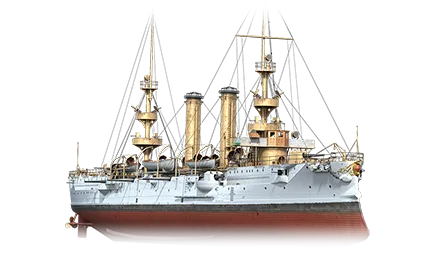
The hull had sloped entries with an even keel for about 2/3 of the lenght, a pronounced underwater ram bow, and a narrow cruiser stern. Four of the smaller guns wer in casemates for and aft of the hull under cutouts as well. The masts were never meant to be rigged, but they could received a schooner rig on paper. They also had six utility boats under davits suspended above the battery deck and a walkway (narrow hurricane deck) from the forecastle to the stern castle going around the funnels and gooseneck air vents.
The hull displaced 3,769 long tons (3,829 t) “standard” for an overall lenght of 354 ft 5 in (108.03 m), a beam of 43 ft 9 in (13.34 m) and a draft of 18 ft (5.5 m). A well polished product with a balance artillery, they were stable platforms with counterkeels.
Powerplant
The New Oerlans’ engineering plant comprised two shafts with four-bladed propellers, driven by two inverted vertical triple expansion engines, which diverged between ships. For the lead ship, by Humphrys & Tennant and Hawthorn Leslie for Albany. They were fed by four double-ended coal-fired Scotch marine boilers for a total rating of 7,500 ihp (5,600 kW) and design speed of 20.5 knots (38.0 km/h; 23.6 mph) as shown on trials. In normal load they carried 512 tons of coal, which could be increased to 747 tons in wartime (navypedia states 747 for CL22 and 767 for CL23). This enabled them on average 4000 nautical miles (7400 km) at 10 knots (18.5 kph).
Protection
Harvey armor, a US patented process used in Britain was chosen as the latest and best. The scheme was also typical of protected cruisers of the time.
-Armored deck: 3+1⁄2 inches (89 mm) on the side slopes, 1+1⁄4 inches (32 mm) on the flat middle section.
-Main guns: 4 inches (102 mm) shields
-Conning tower: 4 inches (102 mm) armor.
Some sources adds: 4 inches (102 mm) on the boiler room glacis.
Armament
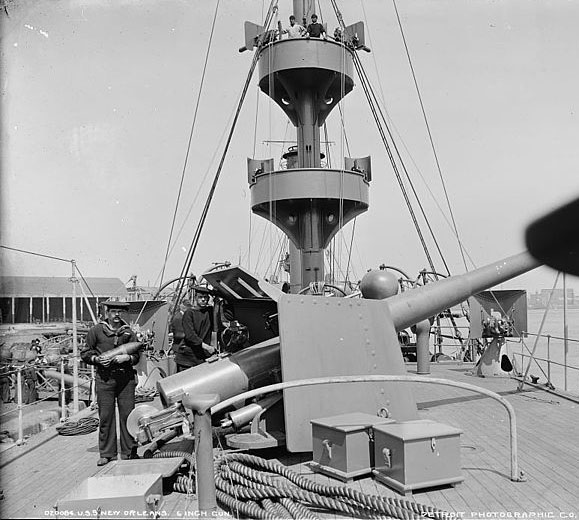
The New Orleans class were originally armed with six 6-inch (152 mm)/50 caliber rapid fire (RF) guns, four 4.7-inch (119 mm)/50 caliber RF guns as typical of British-made export-model guns from the same Company. There 6-inch guns were likely Elswick Pattern DD, the 4.7-inch guns were Pattern AA.
So they were likely kept as is to gain time and became unique in the US Navy, designated “6”/50 caliber Mark 5 Armstrong guns”, “4.7”/50 caliber Mark 3 Armstrong guns”. This was rounded up by 18 light guns for closer defence and four dismounted Maxim machine guns plus three torpedo tubes. All in all a well rounded armament.
6-inch/50-caliber gun Mark 5
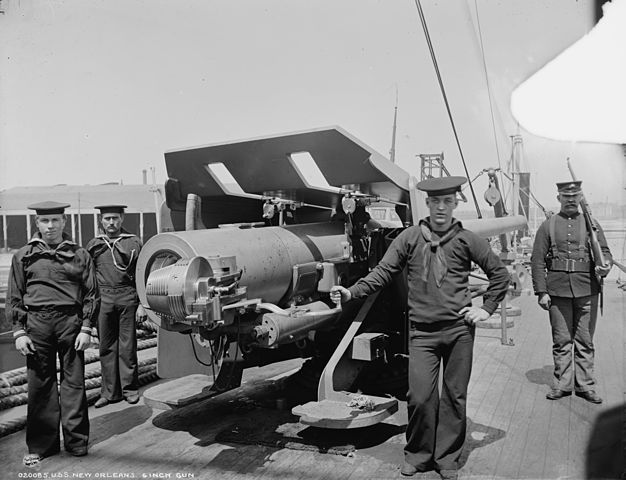
British Elswick Pattern DD. Arranged with one each fore and aft, two each fore and aft in sponsoned sides for ahead or astern fire.
No more info on these.
5-inch/50 (127 mm) Mark 3
These 4.7-inch guns also Pattern AA were on the broadside under shields and bulwark cutouts, only capable of broadside fire. They were quicker firing and shorter range compared to the main guns.
Mass: 4,200 lb (1,900 kg), lenght 236.2 in (6.00 m), barrel 231.1 in (5.87 m) bore (48.9 calibers)
Shell: 45 lb (20 kg) 4.724 inches (120 mm), Muzzle velocity 2,215 ft/s (675 m/s)
Elevation −3° to +20°, range 9,900-yard (9,053 m).
Rate of fire: 5–6 rounds per minute.
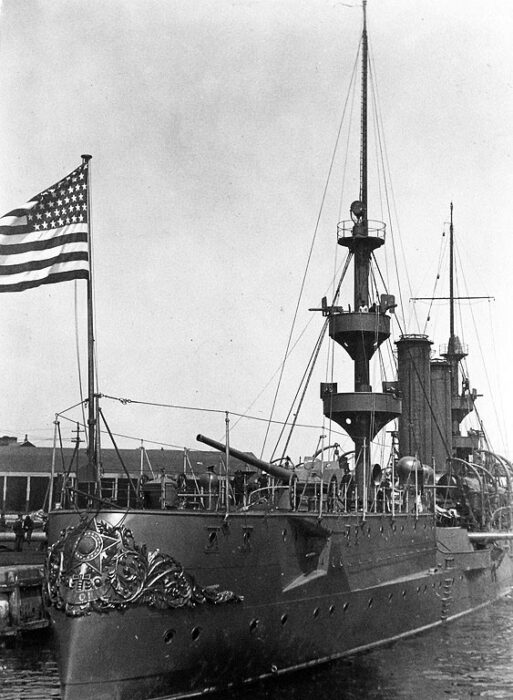
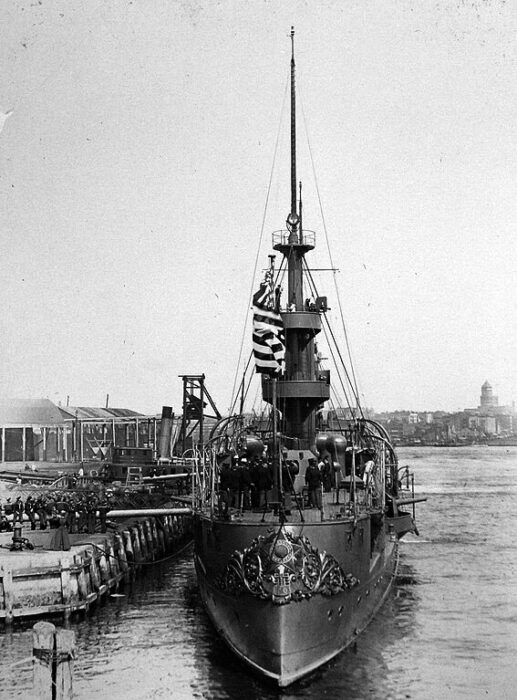
6-pounder (57 mm (2.2 in)) Hotchkiss Mk.I
Ten 6-pounder 57 mm (2.2 in) Hotchkiss RF guns. Four were in cutout casemates in the fore and sten castles. Two were on the aft deck, two likely in cutouts of the bulwark amidship, leaving two likely close to the bridge or on its wings.
Standard Hotchkiss Mark I furing the 57x307R at 25 rds/minute and 1,818 feet per second (554 m/s) to max 4,000 yards (3,700 m).
1-pounder (37 mm ( in)) Hotchkiss Mk.I
eight 1-pounder 37 mm (1.5 in) RF guns, als called “Hotchkiss Light, Short, Mark 1: 20 and 27 calibers”. 25 rpm, HE 1.058 lbs. (0.48 kg) unitary shell to 1,500 fps (457 mps) and at a range of 3,500 yards (3,200 m). They were likely located in the four fighting tops.
In complement, they also had four .30-cal. (7.62 mm) Maxim machine guns that went probably with wheeled carriages to be used for landing parties as customary of the time.
Torpedo Tubes
Three 18-inch (457 mm) torpedo tubes for Whitehead torpedoes, one at the bow over water, two at the beam, same, under shutters located close to the end of the forecastle. Probably fired the Whitehead Mark I.
Upgrades
This singular armament caused compatibility issues with the USN logistic chain. So in 1903 during refits at the Cavite Navy Yard their 4.7-inch guns were replaced with standard 5-inch (127 mm)/50 caliber Mark 5 guns. In 1907 ths conversion was completed when the 6-inch guns were replaced with additional 5-inch guns for a completely uniform battery. It was stime as between gunnery exercises and the 1898 war they had spent most of their ammunitions. Their torpedo tubes were also removed in 1903 as redundant and a possible weakness.
Her former guns from relocated at the Grande Island/Subic Bay in 1907-1910 and goven to operate to the United States Marine Corps. Meanwhile the Coast Artillery Corps was being built modern defenses at Fort Wint. In 1918, there was another refit. The cruisers lost two main guns, while gaining a standard 3-inch (76 mm)/50 caliber anti-aircraft gun. On of her removed 6-inch gun Mark 5 was delivered to the Army, converted on a M1917B field carriage to cover offensives on the Western Front.
⚙ specifications |
|
| Displacement | 3,769 long tons (3,829 t) |
| Dimensions | 354 ft 5 x 43 ft 9 in x 18 ft (108.03 x 13.34 x 5.5 m) |
| Propulsion | 2× shafts IVTE engines, 4 DE steam boilers, 7,500 ihp (5,600 kW) |
| Speed | 20.5 knots (38.0 km/h; 23.6 mph) |
| Range | 25,520 nmi (47,260 km; 23,370 mi) at 10 kn (19 km/h; 12 mph) |
| Armament | 6x 6-in/50, 4× 4.7 in/50, 10× 6-pdr, 6× 1-pdr, 4× Maxim MGs gun, 3× 18 in TTs |
| Protection | Deck 1.3-3.2 in (32-89 mm), CT 4 in (102 mm), shields 4-in |
| Crew | 366 total |
Career of The New Orleans class
 USS Orleans (CL-22)
USS Orleans (CL-22)

Laid down in 1895 as the Brazilian Amazonas, launched on 4 December 1896 at Armstrong, Mitchell and Company, Newcastle upon Tyne. She was repurchased by the US and commissioned as USS New Oerlans on 18 March 1898. She sailed on 27 March for fitting out at New York, as the Spanish–American War was about to flare out (21 April). She left Norfolk inVirginia, on 17 May to joing the Flying Squadron off Santiago de Cuba, on 30 May. A day later she reconnoitered the harbor, spotted and opened fire on Spanish ships and shore batteries. Se took part in two more bombardment missiones on 6 and 16 June, but return to recoal at Key West, missing the Battle of Santiago de Cuba on 3 July.
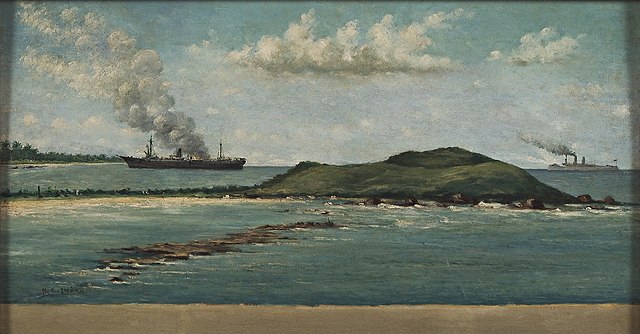
Painting by Manuel Jordan showing the USS New Orleans (on the right) burning the beached Spanish steamer Antonio Lopez (on the left) near the coast of Puerto Rico.
This summer, she stayed with the blockade line San Juan-Puerto Rico up to Guantanamo Bay, and finished off the Spanish steamer Antonio Lopez on 16 July, as well captured the French blockade runner Olinde Rodrigues, on 17 July. Back in Philadelphia on 20 October (Peace Jubilee) she made her first peacetime trip from New York to her namesake city from 16 May through 29 May 1899. After summer exercises (Atlantic) she left New York on 21 October for the Asiatic Fleet via the Azores and Port Said, Suez Canal, and arrived in Manila on 21 December. For 5 years she was the squadron flagship and made cruises to the China coast. Relieved by Baltimore she left Cavite on 27 December 1904 for Mare Island (27 January 1905) to be decommissioned on 6 February.
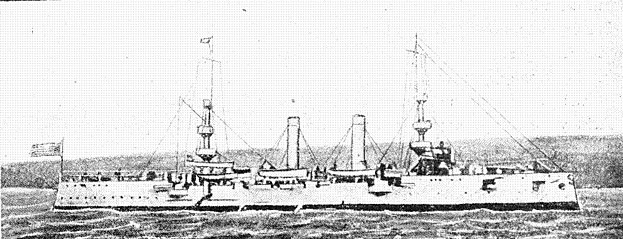
On 15 November 1909 she was recommissioned and sent to Yokohama (25 April 1910) to join the squadron, cruised until back to Bremerton on 14 February 1912, paid off into reserve.
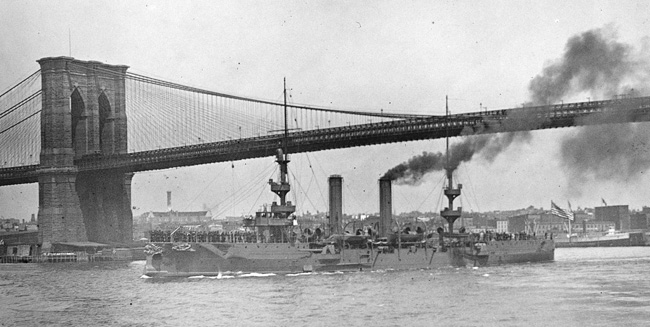
Recommissioned on 31 December 1913, she patrolled the west coast of Mexico in 1914 and observed the Topolobampo naval campaign in the Gulf of California (Mexican Revolution) and three Battles of Topolobampo. Next she trained the Washington Naval Militia and was back in Mexican waters, then was overhauled at Puget Sound and via Panama she was based at Hampton Roads on 27 August 1917.
As the US entered WWI she escorted convoys from New York City to RDV RN destroyer and to the French coast until 16 January 1918. She left New York for the Asiatic Station, Yokohama via Honolulu (13 March), then cruised to China-Philippines but from 17 July to 20 December 1919 she became a station ship at Vladivostok supporting the white Russian and Allies in Siberia.
Back to Cavite for a refit she returned to Vladivostok supporting the Allied Expeditionary Force from 20 May to 27 September 1920, made another supply run and a last deployment from 14 February to 17 August 1922. She returned to Mare Island on 23 September to decommissioned on 16 November but only striken on 13 November 1929, then sold on 11 February 1930 for BU.
 USS Albany (CL-23)
USS Albany (CL-23)
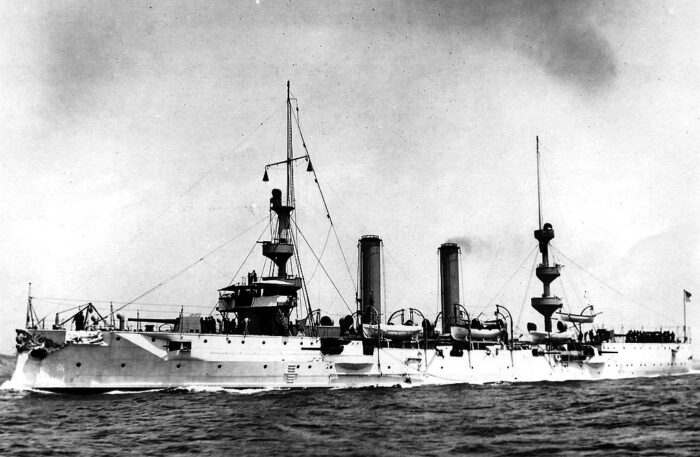
Albany was originally laid down at Newcastle upon Tyne like her sister, but on on 8 December 1897 for the Brazilian Navy (Almirante Abreu), repurchased on 16 March 1898, renamed Albany when launched in February 1899, commissioned on 29 May 1900 for a total Cost of $1,207,644.13 with hull and machinery but wothout armament and ammunitions. Shge was still fitting out when the war came and was not ready in time for any operations.
Instead on 26 June 1900, she departed for the far east and arrived at Cavite on 22 November, Asiatic Fleet for seven months having a refit at Hong Kong (December 1900-17 February 1901) and departed on 3 July for the European Station via Suez and Mediterranean on 15 September and underway visited many countries and ports in the area. In the Atlantic on 18 June 1902 via Cherbourg and Southampton she joined USS Illinois, USS Chicago, USS San Francisco on 12 July for exercises which included the Baltic Sea, stopping at Stockholm, Kronstadt, Copenhagen and was to the Med via Plymouth before departing n November for the West Indies for tactical maneuvers until January 1903. After a refit in Boston and the New York Navy Yard she departed back for Europe on 15 February 1903, via the Mediterranean, she transited Suez in May 1903 for the Far East via Hong Kong.
She joind the Asiatic Fleet deployed at Yantai, northern China and had a refit at Kobe and Yokohama, then sailed to Hawaii and later to Guam before arriving in Cavite on 20 January 1904. She was in Shanghai in February, and back on 22 March. She mlade anotehr cruise to Shanghai and back in April and sailed back home via Guam and Honolulu to Bremerton, decommissioned at Puget Sound, inactive for three years.
Recom. on 10 June 1907 she was reassigned to the Pacific Fleet, but cruised the western coasts of North-Central America in training evolutions and surveillance missions of Mexico, Honduras, El Salvador, Nicaragua. She was back at Mare Island on 18 July 1909, then formally transferred in January to the “Special Service Squadron”, used to land landing forces to protect American interests in Mexico-Central America. In April 1909 she rescued passengers from the SS Indiana, ranning aground off Isla Santa Margarita.
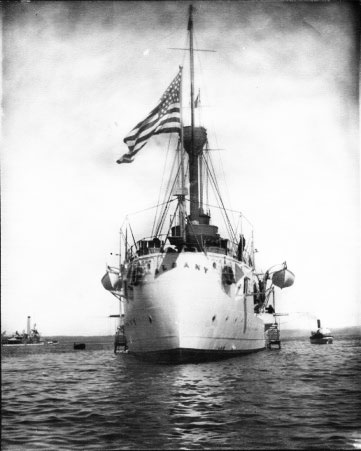 By September 1909 she was at the dedication ceremonies of the Santa Monica Municipal Pier. She had a refit by October at Mare Island and returned to Magdalena Bay, and Portola Festival at San Francisco. In 1910 she patrolled off Nicaragua with Rear Admiral William W. Kimball’s Nicaraguan expeditionary force. On 4 August after a refit she saild for the Asiatic sqn. arrived at Woosung in China, on 15 September. On 20 September 1913 she left Yokohama for home via Honolulu and entered San Francisco on 12 November for a refit at Puget Sound, reserve on 23 December but recommissioned on 17 April 1914. She was in Mexican waters after the incident at Tampico and landing at Veracruz. Decom. on 4 December 1914, she had a general overhaul until early 1915, trained naval militias of Washington and Oregon, fully recom. on 12 May 1916, and in Mexican waters after the incident at Columbus.
By September 1909 she was at the dedication ceremonies of the Santa Monica Municipal Pier. She had a refit by October at Mare Island and returned to Magdalena Bay, and Portola Festival at San Francisco. In 1910 she patrolled off Nicaragua with Rear Admiral William W. Kimball’s Nicaraguan expeditionary force. On 4 August after a refit she saild for the Asiatic sqn. arrived at Woosung in China, on 15 September. On 20 September 1913 she left Yokohama for home via Honolulu and entered San Francisco on 12 November for a refit at Puget Sound, reserve on 23 December but recommissioned on 17 April 1914. She was in Mexican waters after the incident at Tampico and landing at Veracruz. Decom. on 4 December 1914, she had a general overhaul until early 1915, trained naval militias of Washington and Oregon, fully recom. on 12 May 1916, and in Mexican waters after the incident at Columbus.
By early 1917 she joined the Atlantic Fleet until the US went at war.
On 5 July she started convoy escorts from New York and became flagship, Squadron 6, Patrol Force, Atlantic Fleet for Rear Admiral William C. Watts. Until 11 November 1918, she escorted 11 convoys. In 1919, she was back in the Asiatic Fleet but soon sent to Vladivostok in Siberia like her sister, for several tours of duty to support American troops ashore and sending armed landing parties ashore until withdrawn in the spring of 1920 and returned to normal duties for the Asiatic Fleet. She became a gunboat on 17 July 1920, then cruiser again as CL-23 on 8 August 1921, left on July 1922 for Mare Island on 6 August, decommissioned on 10 October 1922 and berthed here until stricken on 3 November 1929 sold for BU on 11 February 1930.
Read More/Src
Books
Bauer, K. Jack; Roberts, Stephen S. (1991). Register of Ships of the U.S. Navy, 1775–1990: Major Combatants. Greenwood Press.
Burr, Lawrence (2011). US Cruisers 1883-1904: The Birth of the Steel Navy. Osprey Publishing.
Friedman, Norman (1984). U.S. Cruisers: An Illustrated Design History. Annapolis, Maryland: Naval Institute Press.
Gardiner, Robert; Chesneau, Roger (1979). Conway’s All the World’s Fighting Ships 1860–1905.
Links
On navypedia.org/
dreadnoughtproject.org/ New_Orleans_Class
navsource.org neworleans/
navsource.org/ albany.htm
history.navy.mil/ USS+albany
web.archive.org/ harvard-diggins.org/ Julsen_Scrap_Books print Mare Island
on history.navy.mil/
baesystems.com/ heritage elswick-works
tynebuiltships.co.uk/
Congressional Serial Set, Numéro 7667 ;Numéro 7792
navweaps.com 5-40_mk2.php
navweaps.com/ WNUS_3-50_mk2.php
navweaps.com/ 6pounder_m1.php
navweaps.com 1pounder_m1
on en.wikipedia.org/

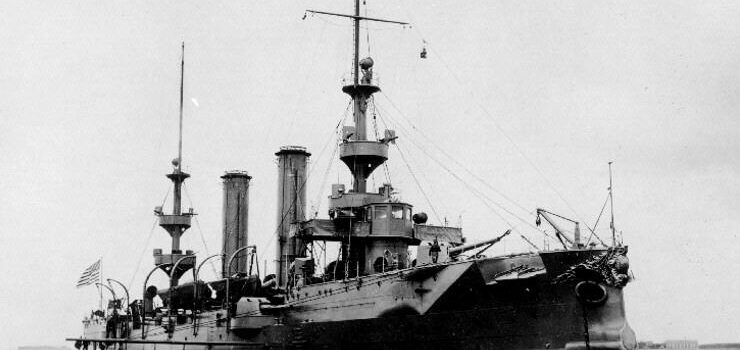
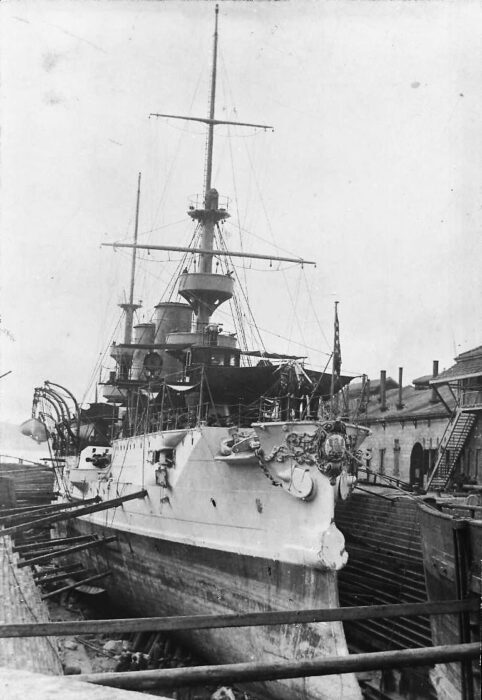
 Latest Facebook Entry -
Latest Facebook Entry -  X(Tweeter) Naval Encyclopedia's deck archive
X(Tweeter) Naval Encyclopedia's deck archive Instagram (@navalencyc)
Instagram (@navalencyc)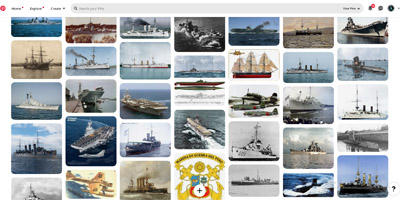

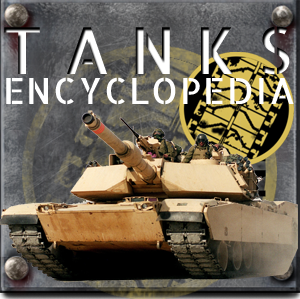
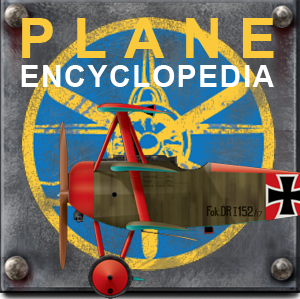
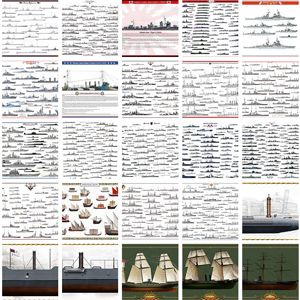
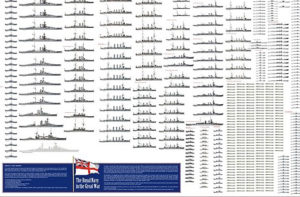
 French Navy
French Navy Royal Navy
Royal Navy Russian Navy
Russian Navy Armada Espanola
Armada Espanola Austrian Navy
Austrian Navy K.u.K. Kriegsmarine
K.u.K. Kriegsmarine Dansk Marine
Dansk Marine Nautiko Hellenon
Nautiko Hellenon Koninklije Marine 1870
Koninklije Marine 1870 Marinha do Brasil
Marinha do Brasil Osmanlı Donanması
Osmanlı Donanması Marina Do Peru
Marina Do Peru Marinha do Portugal
Marinha do Portugal Regia Marina 1870
Regia Marina 1870 Nihhon Kaigun 1870
Nihhon Kaigun 1870 Preußische Marine 1870
Preußische Marine 1870 Russkiy Flot 1870
Russkiy Flot 1870 Svenska marinen
Svenska marinen Søværnet
Søværnet Union Navy
Union Navy Confederate Navy
Confederate Navy Armada de Argentina
Armada de Argentina Imperial Chinese Navy
Imperial Chinese Navy Marinha do Portugal
Marinha do Portugal Mexico
Mexico Kaiserliche Marine
Kaiserliche Marine 1898 US Navy
1898 US Navy Sovietskiy Flot
Sovietskiy Flot Royal Canadian Navy
Royal Canadian Navy Royal Australian Navy
Royal Australian Navy RNZN Fleet
RNZN Fleet Chinese Navy 1937
Chinese Navy 1937 Kriegsmarine
Kriegsmarine Chilean Navy
Chilean Navy Danish Navy
Danish Navy Finnish Navy
Finnish Navy Hellenic Navy
Hellenic Navy Polish Navy
Polish Navy Romanian Navy
Romanian Navy Turkish Navy
Turkish Navy Royal Yugoslav Navy
Royal Yugoslav Navy Royal Thai Navy
Royal Thai Navy Minor Navies
Minor Navies Albania
Albania Austria
Austria Belgium
Belgium Columbia
Columbia Costa Rica
Costa Rica Cuba
Cuba Czechoslovakia
Czechoslovakia Dominican Republic
Dominican Republic Haiti
Haiti Hungary
Hungary Honduras
Honduras Estonia
Estonia Iceland
Iceland Eire
Eire Equador
Equador Iran
Iran Iraq
Iraq Latvia
Latvia Liberia
Liberia Lithuania
Lithuania Mandchukuo
Mandchukuo Morocco
Morocco Nicaragua
Nicaragua Persia
Persia San Salvador
San Salvador Sarawak
Sarawak Uruguay
Uruguay Venezuela
Venezuela Zanzibar
Zanzibar Warsaw Pact Navies
Warsaw Pact Navies Bulgaria
Bulgaria Hungary
Hungary

 Bundesmarine
Bundesmarine Dutch Navy
Dutch Navy Hellenic Navy
Hellenic Navy Marina Militare
Marina Militare Yugoslav Navy
Yugoslav Navy Chinese Navy
Chinese Navy Indian Navy
Indian Navy Indonesian Navy
Indonesian Navy JMSDF
JMSDF North Korean Navy
North Korean Navy Pakistani Navy
Pakistani Navy Philippines Navy
Philippines Navy ROKN
ROKN Rep. of Singapore Navy
Rep. of Singapore Navy Taiwanese Navy
Taiwanese Navy IDF Navy
IDF Navy Saudi Navy
Saudi Navy Royal New Zealand Navy
Royal New Zealand Navy Egyptian Navy
Egyptian Navy South African Navy
South African Navy






























 Ukrainian Navy
Ukrainian Navy dbodesign
dbodesign